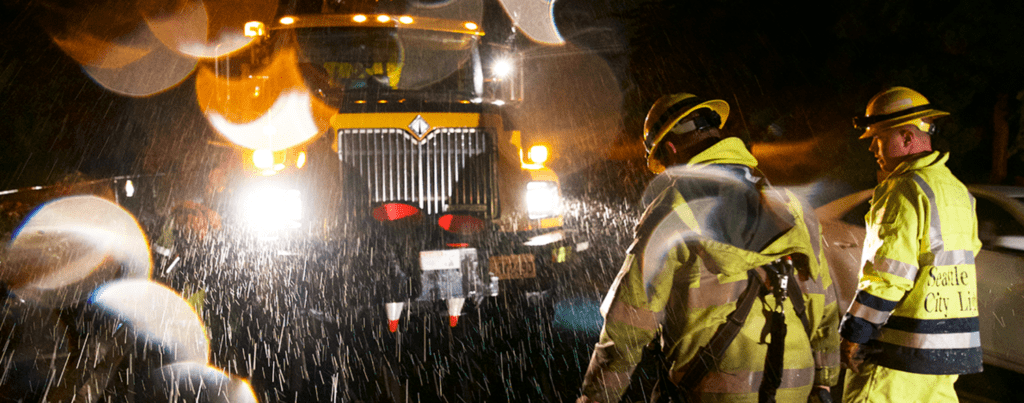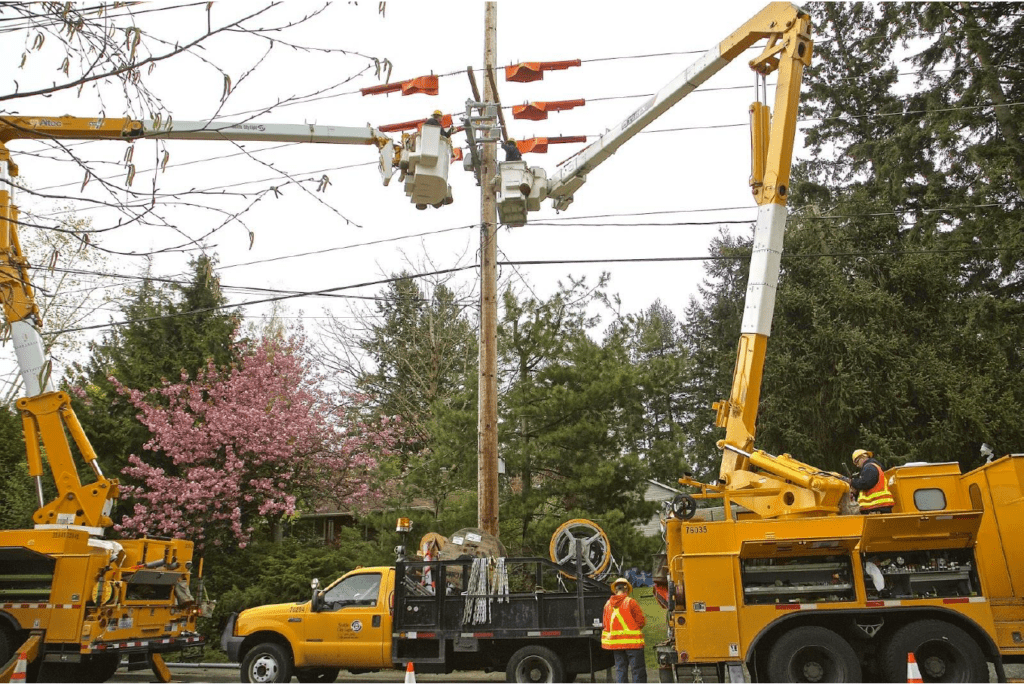

This story was published originally in the December 2019 issue of Northwest Public Power Association Bulletin Magazine. Please note: positions and titles of contributors may have changed since the time of original publication.
When someone thinks about Western Washington, a few things come to mind: Mount Rainier, Puget Sound and trees…a lot of trees. While most people who live in the area, especially in and around Seattle, love its densely vegetated state, it can come at a cost. Fall and winter windstorms create havoc for the area’s infrastructure, bringing down large trees and branches onto power lines. Like other utilities, Seattle City Light then activates its crews to restore power to the sometimes thousands of customers left in the dark.
But even on a “blue sky day,” with uneventful weather, City Light still had challenges with its level of reliability within its service area, especially within those pockets of plentiful vegetation. Crews would have to patrol the lines to find the issue following a fault from a feeder.
In 2016, City Light hired a consultant to analyze the utility’s entire feeder system. From that report, they identified 79 feeders with the most common outages within the last five years.
The utility began to install Fault Location Isolation and Service Restoration (FLISR) devices across the northern region of its service area in 2015. While they began to see an improvement in reliability, the devices still worked independently of each other. That’s when they hired Ryan Pham, project lead for distribution automation, to implement a pilot program to organize the FLISR devices. This shift in focus by City Light led to a new level of optimizing this technology and system for the utility and, ultimately, its customers.

On a standard feeder, it can take hours or even days to restore power following an outage. When a feeder experiences a fault, all its customers will lose power, crews often patrol the entire feeder main to locate the fault, and drive to different switch locations to manually operate the switches, isolating the problem, before repairing the fault. The FLISR switch reduces both the number of customers affected by outage and restoration time. The only customer within a faulty segment will experience sustained outage instead of customers on the entire feeder. Crews need to patrol on the faulty segment only, and switching is done automatically or remotely. The system including several “smart switches” along with a secured, reliable communication network and integration to the Energy Management System. The system can detect, isolate the fault, and reroute power quickly, often within 20 seconds.
With the amount of staff time, it takes to restore power, coupled with the customers’ losses, such as spoiled food or downtime for commercial and industrial customers, the total cost of these outages can add up quickly. According to Ryan, this technology was put to the test almost immediately. The system passed with flying colors.
In 2016, FLISR reduced the number of customers affected by an outage by more than 13,300 compared to those without the system. That’s two million fewer minutes of interruption compared to the estimated outcomes of those without the system.
“Our team put one new system in service on Nov. 4, 2017. Four days later, a storm caused a large outage, impacting that same area. The system automatically rerouted the power in seconds, saving 95% of the customers with the faulty feeder from the sustained outage,” Ryan recalled. “FLISR can identify, isolate the faulty segment and restore power to the majority of customers automatically, which truly benefits everyone.”
As with all new technologies, the installation and testing of the system did take time and resources. The pilot project required significant planning from across the utility, along with multiple levels of training. From dispatchers within the System Operation Center to line workers to engineers, the success of FLISR is predicated on everyone knowing the roles of each group.
The benefits of the system are cascading down throughout the utility. Less patrolling the lines with City Light vehicles means less staff time and a smaller carbon footprint. It also means switching is done remotely, and fewer crews out in the elements during a storm, keeping crews safer. The system also monitors and records the feeders’ loading, which is valuable data for various engineering and operation groups. Its robust communication network can also serve other new grid modernization technologies.
“We continue to see the benefits of this system even today,” Ryan explained. “It was made possible by advanced communication and computing technologies, something that wouldn’t have been possible 30 years ago.”
Uzma Siddiqi, City Light’s automation engineering supervisor, believes that installing a system like FLISR is a foundational component of how the utility can bolster its responses to outages in the future. “This system creates new levels of situational awareness within our system,” she said. “With this type of infrastructure, we have now designed our system to equip those trying to solve the problem in real-time with more tools to use and more information. Above all, it helps set up our employees for success.”
The FLISR project lives under the umbrella of distribution automation and is a crucial project under City Light’s collective work of grid modernization. The utility’s litany of projects under the grid modernization umbrella includes Advanced Metering, Outage Management System, new types of conductors, and, among others, line sensor technology. Projects like these, while incredibly beneficial to both the utility and the customers, uncover new obstacles and work for the respective teams.
“You get smarter with these types of projects as you progress,” Uzma explained. “We take a continuous improvement approach to ensure that the technology is maintained properly while ready for the next project.”
City Light has plans to install more FLISR systems to the identified least reliable feeders. As the utility continues to implement these technologies, Uzma believes, City Light will continue to improve on its commitment to its customers.
“There is great grid modernization going on at this utility and FLISR is another prime example of how City Light evolves as a utility. It’s part of the story.”